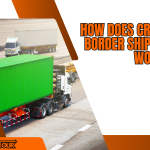Choosing the right freight transportation service for your business can seem like a daunting task. With various options available, such as air, sea, and land freight, it’s important to understand which method best suits your needs. Whether you’re shipping locally or internationally, selecting the right freight service can make a significant difference in your supply chain efficiency and overall cost. In this blog post, we’ll walk you through the key factors to consider when choosing freight transportation.
1. Understand Your Freight Needs
Before diving into the world of freight transportation, it’s important to assess your unique shipping needs. Understanding your cargo’s characteristics, destination, and delivery time requirements will help you narrow down the transportation options.
Key Considerations:
- Size and Weight: Is your shipment small and lightweight, or large and heavy? Some transportation methods are better suited for certain cargo sizes.
- Type of Goods: Are you shipping perishable items that require temperature control, or non-perishable items like industrial equipment?
- Delivery Time: How urgent is the shipment? Expedited services may be necessary for time-sensitive shipments, while standard freight options could be sufficient for non-urgent deliveries.
By analyzing these aspects, you can identify the right type of freight service for your shipment, ensuring efficient delivery without unnecessary delays or costs.
Key Benefits of Understanding Your Freight Needs:
- Accurate freight solution selection
- Efficient cost management
- Proper handling and delivery method
2. Consider the Shipping Mode: Air, Sea, or Land?
Once you’ve understood your shipment’s needs, the next step is to choose the appropriate shipping mode. Each mode of transportation has its advantages and considerations, depending on the type of goods being shipped and your business requirements.
Air Freight
Air freight is the fastest option, making it ideal for time-sensitive shipments. It’s typically used for high-value, urgent items such as electronics, medical supplies, or documents.
Advantages:
- Fast delivery times, often within 1-3 days
- High security for valuable goods
- Ideal for international shipping
Considerations:
- Expensive compared to other modes
- Limited to smaller shipments due to weight and size restrictions
Sea Freight
Sea freight is ideal for shipping large volumes of goods over long distances, especially internationally. It’s a cost-effective method, particularly for bulky or heavy shipments.
Advantages:
- Most cost-effective for large or bulky shipments
- Capable of carrying large volumes
- Suitable for non-perishable items
Considerations:
- Slower transit times compared to air freight
- Requires more planning and coordination for international shipments
Land Freight
Land freight (trucking or rail) is commonly used for domestic shipments or overland routes. It’s the most flexible option and can deliver goods to locations that aren’t accessible by air or sea.
Advantages:
- Flexible and cost-effective for local or regional shipments
- Direct delivery to final destinations (especially for land-based locations)
- Ideal for dry loads and smaller shipments
Considerations:
- Limited by road conditions, especially during bad weather
- Longer delivery times for long-distance shipments
By evaluating your shipment’s characteristics and delivery requirements, you can choose the most suitable mode of transportation for your business needs.
Key Benefits of Considering Shipping Mode:
- Faster and more cost-efficient deliveries
- Customization based on your cargo’s specific needs
- Optimal delivery timeframes for urgent shipments
3. Evaluate Freight Costs and Budget
Freight costs are a major factor in choosing the right transportation method. While air freight is fast, it tends to be the most expensive option. Sea freight, on the other hand, is typically more affordable for larger shipments but takes longer. Land freight provides flexibility and competitive pricing for domestic shipments.
When considering freight costs, make sure to factor in all additional charges, such as fuel surcharges, customs fees, and insurance costs. It’s also important to consider long-term costs for consistent shipments and look for ways to optimize shipping costs through long-term contracts or bulk shipping agreements.
Key Cost Factors:
- Fuel surcharges
- Insurance and security fees
- Delivery speed or urgency
- Additional services like packaging and handling
Key Benefits of Evaluating Freight Costs:
- Better budgeting and cost control
- Identification of the most cost-effective shipping method
- Potential for discounted rates through long-term partnerships
4. Choose a Reliable Freight Provider
Selecting a reliable freight transportation company is crucial for ensuring smooth operations and timely deliveries. Look for a company that offers consistent, high-quality service and has a proven track record in your industry.
Key Questions to Ask:
- What’s their delivery time record? A company with a strong on-time delivery record will help you avoid delays and keep your customers happy.
- Do they offer tracking services? Real-time tracking can give you visibility into your shipment’s progress and allow you to address issues proactively.
- What’s their customer service like? A responsive and helpful customer support team can make a big difference if problems arise during transit.
- Do they offer insurance? Ensure your freight provider offers insurance to cover potential losses or damages during transportation.
By choosing a reputable freight provider with experience in handling your specific needs, you’ll minimize risk and improve the overall efficiency of your supply chain.
Key Benefits of Choosing a Reliable Provider:
- Reduced risk of delays and damages
- Increased customer satisfaction
- Access to professional support when needed
5. Review the Service Options and Additional Features
Beyond just choosing the transportation mode, consider additional features that may improve the overall shipping experience. Many freight services offer specialized solutions such as temperature-controlled transport, expedited shipping, and custom packaging options for delicate goods.
For example, if you’re shipping perishable goods like food or pharmaceuticals, you’ll need a freight service provider that offers temperature-controlled or refrigerated trucks (reefer services). If you’re shipping hazardous materials, make sure the freight provider is compliant with regulations and has the necessary certifications.
Additionally, look for freight services that offer value-added features such as:
- Packaging services to ensure your goods are securely packed
- Real-time tracking for better visibility and monitoring
- Delivery flexibility, including weekend or after-hours delivery options
Choosing a service that provides these additional features can save time and prevent potential issues, ensuring your shipment arrives safely and on time.
Key Benefits of Reviewing Service Options:
- Customized solutions for unique shipping needs
- Added features that improve convenience and safety
- Increased flexibility for businesses with varying logistics demands
Conclusion: Making the Right Choice for Your Freight Transportation
Choosing the right freight transportation service requires careful evaluation of your shipping needs, cost considerations, and the level of service you require. By understanding the characteristics of your cargo, considering the different shipping modes, evaluating costs, and selecting a reliable provider, you can ensure that your goods are transported efficiently and cost-effectively.
At Detour Freight Inc., we offer a wide range of freight transportation solutions tailored to meet the unique needs of your business. Whether you’re shipping dry loads, temperature-sensitive goods, or oversized items, our team is here to provide reliable, timely, and cost-effective freight services.
Contact us today to discuss your freight transportation needs and get a customized quote that works for your business!



